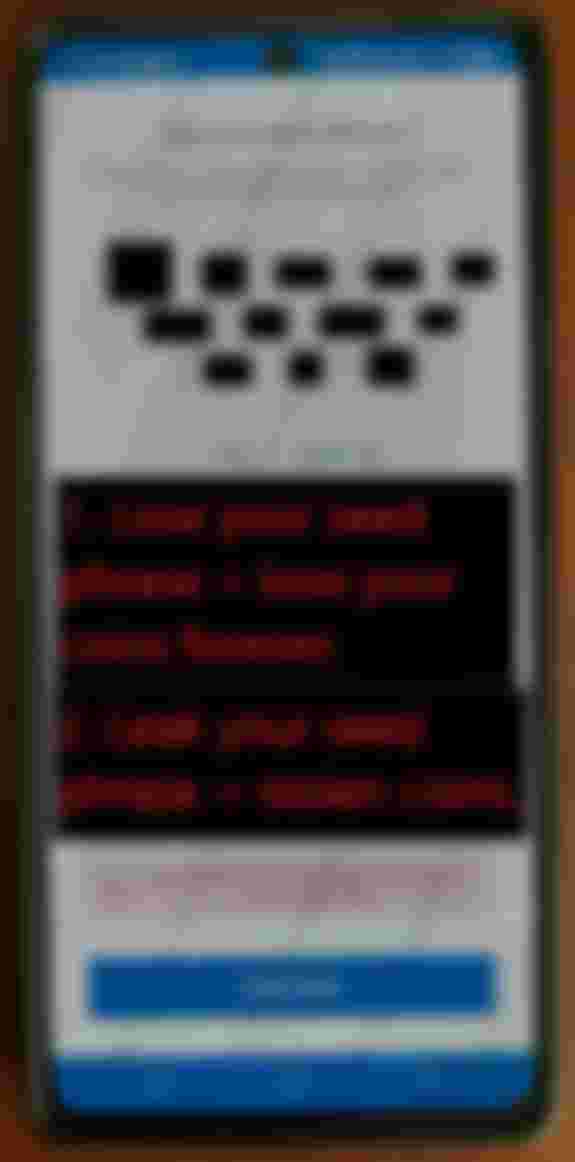
This is a quick guide to Trust Wallet, a personal cryptocurrency wallet which is one of the necessities to begin in crypto. Additionally, the staking service in this wallet is highly preferred because of its non-custodial nature. Originally, this article was intended to combine with the cryptocurrency quick guide but too many large images in one place can be overwhelming for many readers which is best to be separated here. For those already literate in information communication technology (ICT) probably does not need this guide so go ahead and read the quick guide cryptocurrency instead.

The home menu shows clear user interfaces (UI) of what Trust Wallet can do. It can send and receive coins, shows the total balance in our preferred currency, stake coins, store non-fungible tokens (NFT), and interact with decentralized finance (DeFi). Just try tapping on anything. Click the top right to add more coins if the coin you are looking is not on the home menu.

Clicking on one of the coin for example here is Ethereum, will show the balance and the transaction history of Ethereum in our wallet, and to see more details about the Ethereum itself, click the chart icon on the top right.

In the more details menu, we can see the information that most people wanted to see, the price chart. Below is the next important links which are the website describing the coin and the blockchain explorer to see all the transactions of the coin. Finally, another important fundamental for currency which is the supply.

Back to the Ethereum menu or the home menu, after tapping the receive button we will be shown an address which is a bunch of random characters. This is our account number equivalent to banking which can be given to anyone to give us coins. It is also safe to open this address to the public as it can only receive coins and nothing more. Although anyone who knows this address can track our transactions which if we want anonymity, then do not open it to the public. Finally, the copy button or the quick response (QR) code are their to prevent human error where to avoid as much as possible writing or typing the address manually because transactions are unidirectional or irreversible.

The send menu, is to send coins. Again, if we send to the wrong address, it can be lost forever. Therefore always double check. Ask your friend to use copy paste, and you yourself should copy paste as well. We can also scan the QR code but still double check as sometimes malware can change the input address.

We can also scan the QR code but still double check as sometimes malware can change the input address.

At the beginning of starting Trust Wallet or when we want to create another wallet within Trust Wallet, a seed phrase or private key is generated. Backup and secure them, not just one of them. Not backing up the keys may result in losing access to our funds forever. Eventhough we back them up but did not secure it and leaks to other people, anyone who knows these keys can access and steal our funds. If we do it right, only ourselves can access the funds and not even the highest authorities can seize or confiscates our funds.

A necessary misconception about cryptocurrency wallets because it is necessary for the public to understand is that Trust Wallet and other non-custodial wallets does not store our coins. The closest statement to correctness which is still not the most accurate for new users to understand is that our coins are stored on the blockchain. Trust Wallet only uses our keys to access the blockchain. Therefore, our seed phrase or private key is our fund which we carry anywhere using anything like notes and papers, even just using our memories in our brains is possible.

An extra menu for me is the decentralized exchange (DEX) menu for those who wants privacy in their trading and those who are lazy to use decentralized finance applications (DAPP). Just check the fees and exchange rate too make sure that it is not too expensive. Check the liquidity as well to avoid unwanted trades.

Back in the old days, Trust Wallet was the only mobile wallet I knew that supports decentralized finance (DeFi). There was Metamask, but back then the mobile interface was bad. To use DeFi applications (DAPP), just input the uniform resource (URL) link just like inputing the website address on a web browser. If we do not know any DAPP, then Trust Wallet provides some list to try. Last year's (2020) DeFi craze started with Uniswap which is the first DAPP in DeFi we should learn to use.

Other than NFTs, institutions, and influencers, this year's (2021) bull market was sparked by DeFi on other chains. The problem back then, Ethereum fees was very expensive which can be more than $50 per transaction. It started with Binance Smart Chain and Pancake Swap, allowing users to enjoy DeFi with less than ¢10 per transactions where they also support bridging from ETH to BSC network.
Mirrors
https://0darkking0.blogspot.com/2021/07/quick-guide-to-trust-wallet-mobile.html
https://0fajarpurnama0.medium.com/quick-guide-to-cryptocurrency-for-new-users-9560c129474a
https://0fajarpurnama0.github.io/cryptocurrency/2021/05/07/quick-guide-trust-wallet-mobile
https://hicc.cs.kumamoto-u.ac.jp/~fajar/cryptocurrency/quick-guide-trust-wallet-mobile
https://steemit.com/cryptocurrency/@fajar.purnama/quick-guide-to-trust-wallet-mobile?r=fajar.purnama
https://leofinance.io/@fajar.purnama/quick-guide-to-trust-wallet-mobile?ref=fajar.purnama
https://0fajarpurnama0.wixsite.com/0fajarpurnama0/post/quick-guide-to-trust-wallet-mobile
http://0fajarpurnama0.weebly.com/blog/quick-guide-to-trust-wallet-mobile
https://read.cash/@FajarPurnama/quick-guide-to-coingecko-mobile-604d43b3
https://markethive.com/0fajarpurnama0/blog/quickguidetotrustwalletmobile











